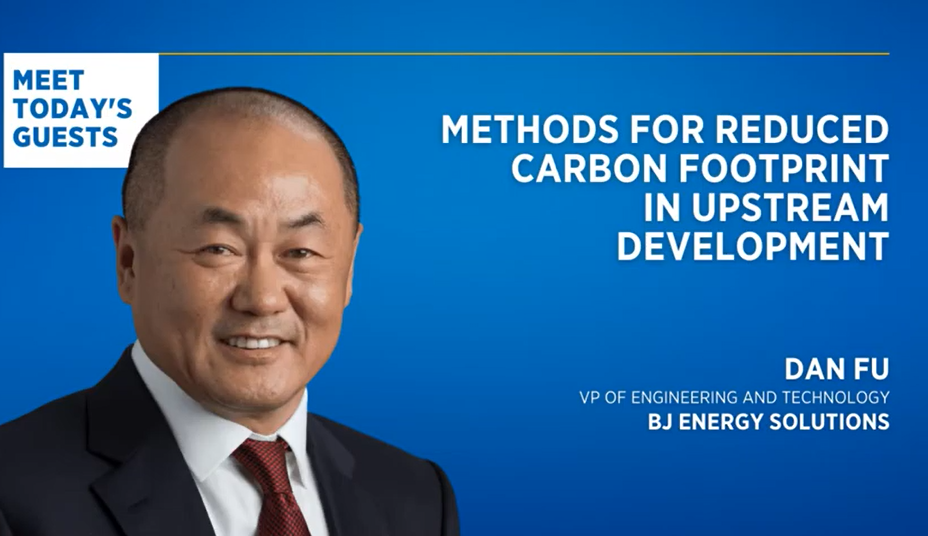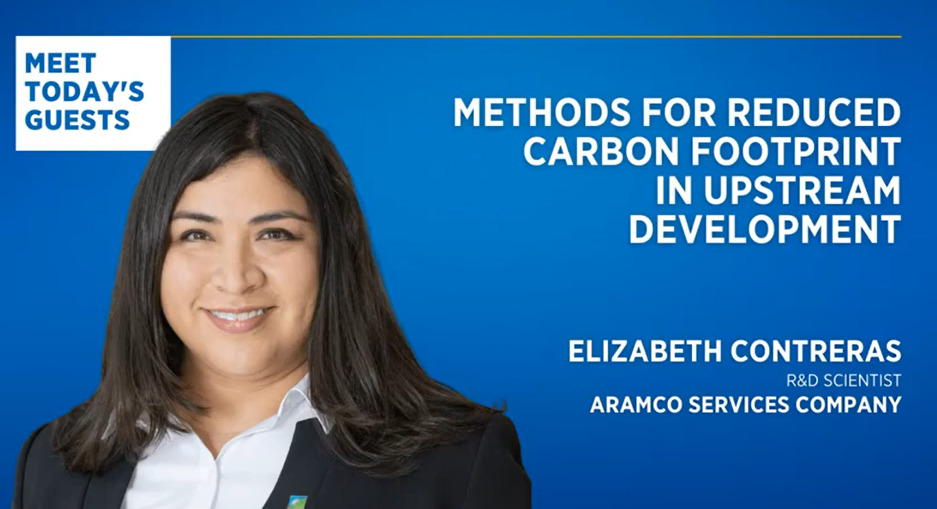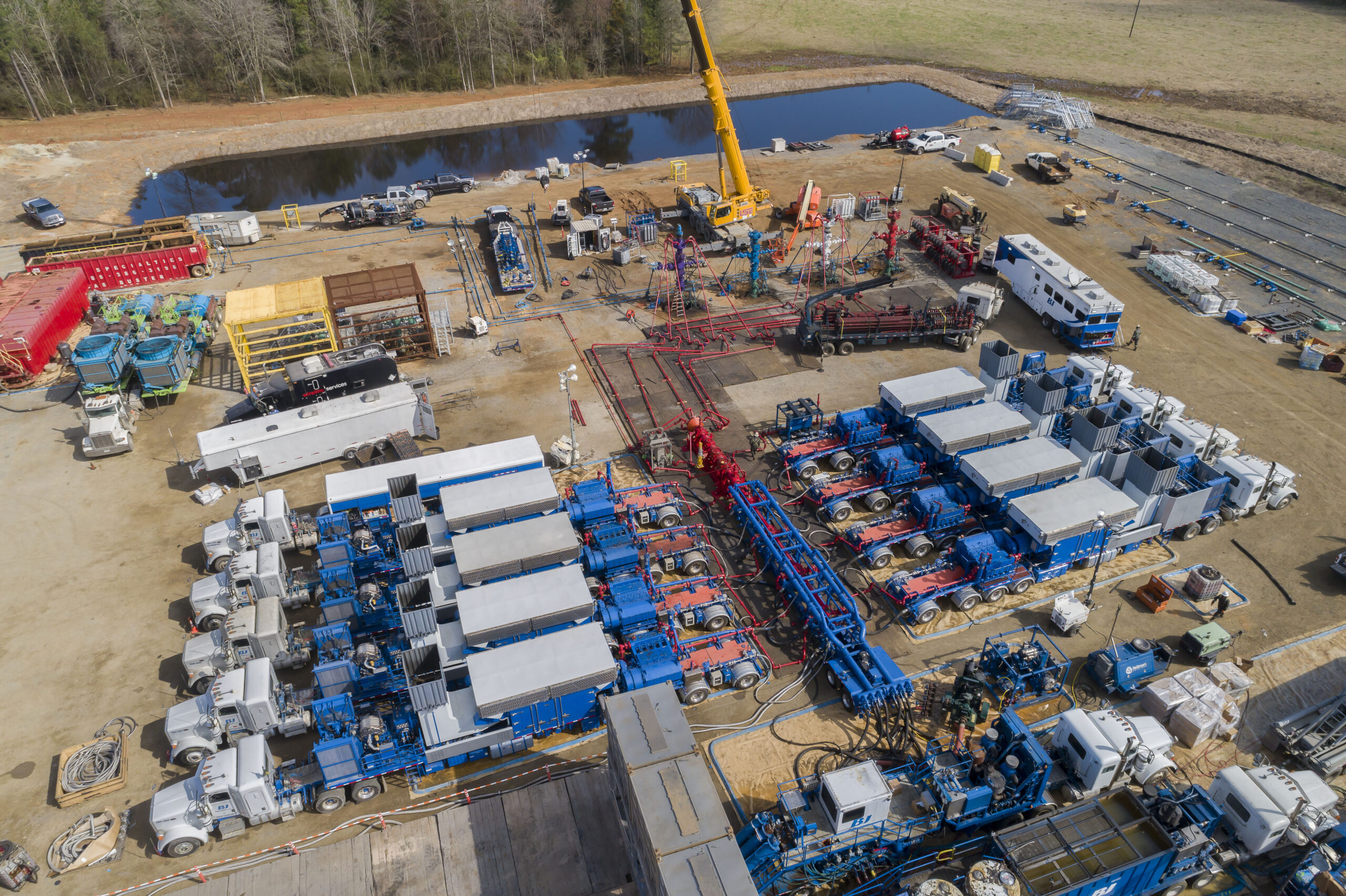Presented by:

Editor's note: This article appears in the E&P newsletter. Subscribe here.
To reduce carbon footprint, operators are looking to weed out the aspects of their operations most damaging to the environment, or scale them back at the very least. Much of those emissions stem from infrastructure deployment, as cementing, while a literal building block of the industry, is responsible for emitting 8% of the world’s carbon emissions.
The key to a smaller carbon footprint across the board, according to Dan Fu, vice president of engineering and technology with BJ Energy Solutions, is spreading awareness of the disastrous consequences of an environment left unchecked.
“Right now I can say the entire supply chain is aligned along the carbon footprint, so it’s a matter of raising awareness,” Fu said. “Don’t focus on the performance itself but incorporate the carbon footprint matrix into your product and then bring that to light.”
Fu was joined by Elizabeth Contreras, R&D scientist with Aramco Services Co., during the recent SPE Live webinar “Methods for Reducing Carbon Footprint in Upstream Development” to discuss what chemistries and technologies are needed and available to help operators put a dent in their environmental impact.

(Source: SPE Live)
“Green chemistry” is a phrase that has evolved to focus more on lowering a company’s carbon footprint, Fu explained. Like the oil and gas industry, the infrastructure industry has also seen a transition to prioritizing transparency with customers, enabling them to see their emission reduction efforts.
“The term [green chemistry] started being used in the oil field in probably 2000 when I first joined the industry," he said. "At the time, green chemistry really focused on the toxicity of the part, how [to] reduce oxidative marine species. The main driver is the off-road industry. Today I think being green is not a luxury or it’s not a request anymore; it’s a normal part of doing business, no matter where you operate.”
He added, “This level of transparency is good for the industry. That will bring a lot of understanding to the regulators as well as the general public."
Contreras, who will be a presenter at the SPE International Conference on Oilfield Chemistry in December, shared how the polymer vesicles she helped develop at Aramco will be able to sequester CO2 present in cement. The vesicles are “designed to be chemical additives for cementing” and will be embedded in cement to extract CO2 “chemically and physically from gas migration events,” she said.
“We’ll be demonstrating how this technology applies CO2 fixation [and] cement self-healing, and by doing so, we’re increasing the integrity and sustainability of cement,” Contreras said. “Because the additive is polymeric, we also found that it imparted elasticity to the cement as a secondary benefit as well. We’re hoping to see in the near future what kind of impact this technology will have not only in the construction of oil wells but also in the construction of infrastructures everywhere, even above ground.”
RELATED CONTENT: Tech Trends (Week of Nov. 22, 2021)
Cement manufacturers face a plethora of challenges in reducing their CO2 emissions. Since cement is such a widely used and reliable product, doing away with it completely is an unreasonable request, she explained. The solution now comes from offsetting the emissions by developing “technologies that can serve the purpose of using CO2 and making new carbon capture technology for sustainability,” Contreras said.

(Source: SPE Live)
“Some converged technology that can be used to convert CO2 into high-value polymers are well documented. We can convert CO2 into adhesives, coatings [and] elastomers, and we’re doing this at the source, at an industrial setting, so we’re talking about the manufacturing plant where we’re capturing the CO2,” she said. “We’ve also developed ways to convert CO2 back into fuels and even to use CO2 to make cements that are carrying faster and stronger, specifically we’ve developed solvents based on amino acids that are used to capture CO2 as well.”
According to Fu, the type of equipment used in the field also has a huge impact on carbon emissions. Typical U.S. operations use up to 22 effective pumps driven by diesel engines, which consume millions of gallons of diesel fuel per year, he explained. Natural gas is considerably greener than diesel fuel and abundant in the U.S.

“Obviously, if you want to address the emission reduction, the temperature of the fuel is becoming a focus,” Fu said. “Now the industry starts looking at the use of natural gas; one of the reasons natural gas is much greener is [its] density. It [provides] about 22% more power than diesel given the same amount of material, and also it emits about 11% less of CO2 because you have higher hydrogen-to-carbon ratio, so when they get burned, you release more water than with the CO2.”
With new carbon capture and storage or sequestration technologies being deployed throughout the oil and gas industry, Contreras believes that versatility is a key factor in successful emission-reducing infrastructure.
“In developing new chemistries and new materials, one of the things to focus on is making technology that could be serving multiple purposes; it has multiple functionalities,” she said. “For example, a material or a polymer or a gas requisition that is beneficial in its application…in these polymer vesicles. This would be a new area of innovation and opportunity just to make these multifaceted types of CO2 sequestration projects.”
Recommended Reading
Halliburton’s Low-key M&A Strategy Remains Unchanged
2024-04-23 - Halliburton CEO Jeff Miller says expected organic growth generates more shareholder value than following consolidation trends, such as chief rival SLB’s plans to buy ChampionX.
Deepwater Roundup 2024: Americas
2024-04-23 - The final part of Hart Energy E&P’s Deepwater Roundup focuses on projects coming online in the Americas from 2023 until the end of the decade.
Ohio Utica’s Ascent Resources Credit Rep Rises on Production, Cash Flow
2024-04-23 - Ascent Resources received a positive outlook from Fitch Ratings as the company has grown into Ohio’s No. 1 gas and No. 2 Utica oil producer, according to state data.
E&P Highlights: April 22, 2024
2024-04-22 - Here’s a roundup of the latest E&P headlines, including a standardization MoU and new contract awards.
Technip Energies Wins Marsa LNG Contract
2024-04-22 - Technip Energies contract, which will will cover the EPC of a natural gas liquefaction train for TotalEnergies, is valued between $532 million and $1.1 billion.





